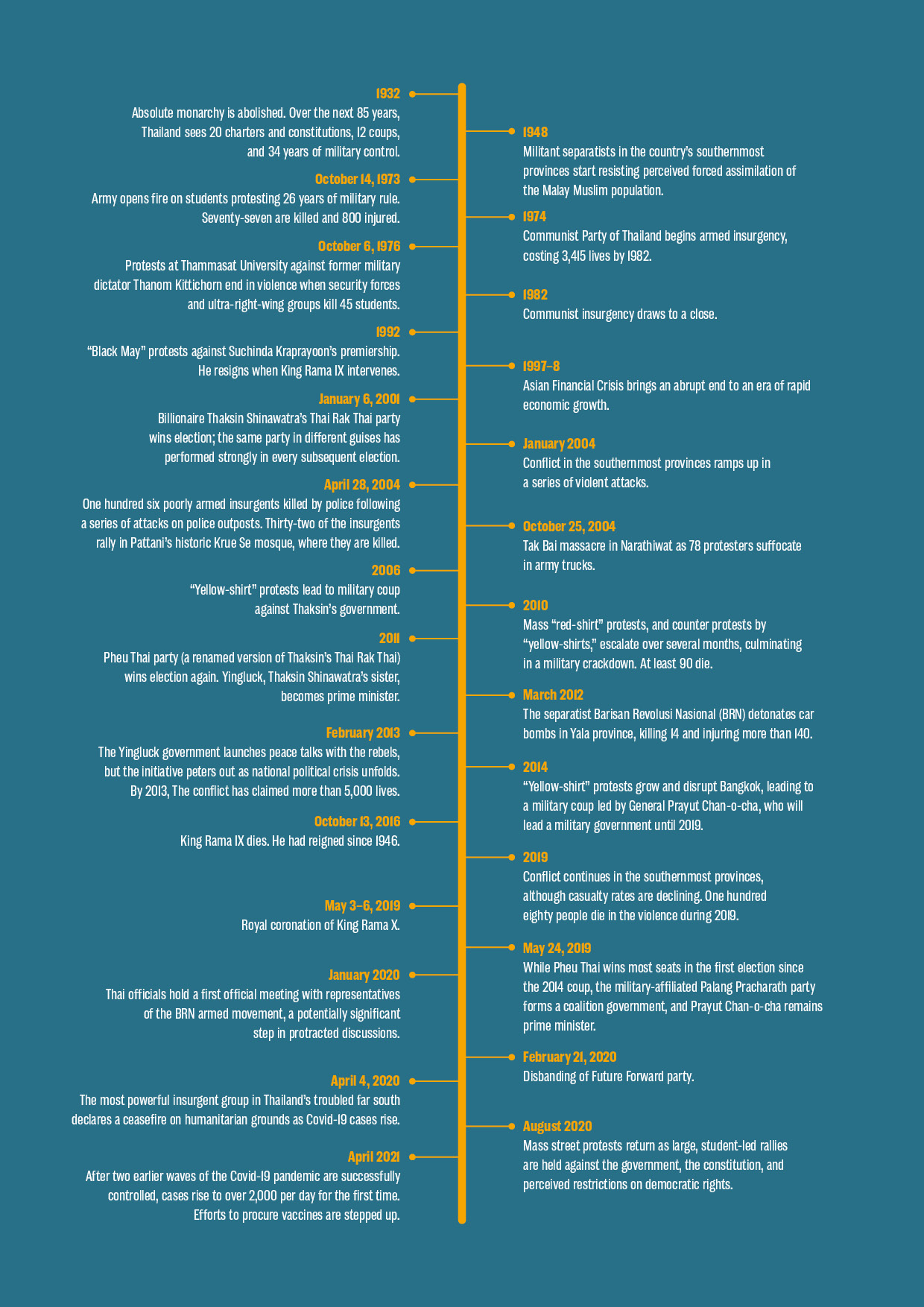The State of Conflict and Violence in Asia 2021
Thailand

Overview
Thailand’s political instability at the national level has continued despite a return to partial democracy. After multiple postponements, Thailand finally held its general election in May 2019. General Prayut Chan-o-cha, who led the 2014 military coup and the post-coup military government up to the election, emerged as prime minister following a lengthy process and delayed results, which were disputed by some actors. In February 2020, an emerging new political party that opposed traditional elites, Future Forward, was disbanded by the constitutional Court for funding irregularities.
In August 2020, a mass movement against the government formed large street protests that grew in size and ambition. Police arrested and pressed charges against a number of prominent student activists involved in organizing the protests. In October, the government imposed more severe restrictions on public gatherings under a state of emergency.
Thailand continues to be plagued by an ethnonationalist insurgency in its southernmost provinces. The conflict is rooted in the historical grievances of the area’s Malay Muslim majority toward the Thai state. While the ongoing peace dialogue remains stagnant, violent attacks continue, although they have gradually decreased in number. The protracted conflict has resulted in over 7,000 deaths since 2004. Across Thailand, gender-based violence remains widespread, affecting a large part of the population.
Thailand confirmed its first case of Covid-19 as early as January 13, 2020, and responded quickly. After a strict national lockdown in April and May, the number of new local infections dropped to zero until December 2020, when cases began to rise once again. The tourism industry has been particularly affected, and Thailand saw its economy contract for the first time since 2014. Anti-immigrant sentiment flared up at various points during the pandemic, particularly in December 2020 as new local infections spread from Myanmar migrant workers. Positive cases rose to new highs starting in April 2021 as the pandemic began to establish itself across the country for the first time.